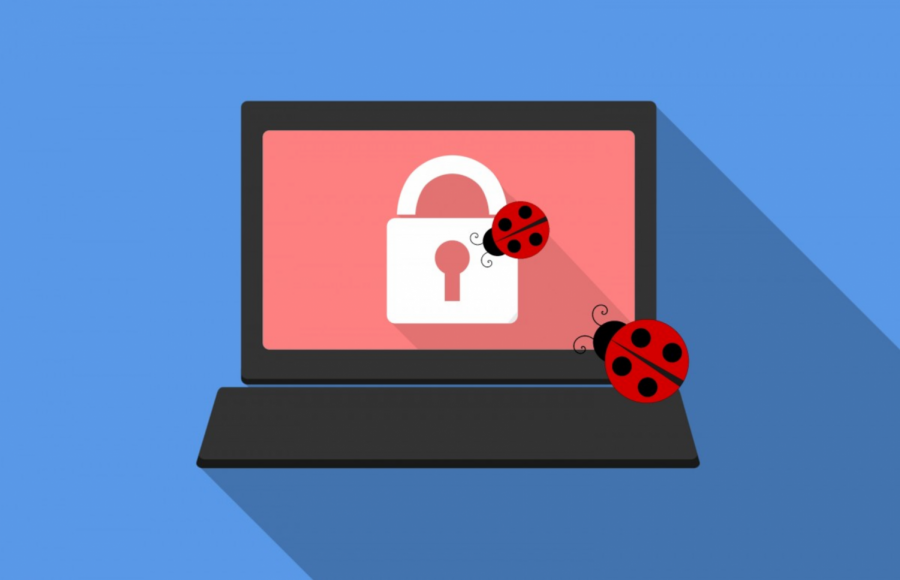Windows 7: End of life leaving millions of computers vulnerable
April 4, 2020
26% of computers are completely insecure and vulnerable to hackers and malware.
How, you may ask?
They are running an unsupported operating system that no longer receives security updates.
Every computer runs on an operating system like Mac, Linux, or Windows. Windows 10 is the newest version of Windows, and it gets frequent security updates from Microsoft.
Recently, Microsoft discontinued support for an older version of Windows with the statement, “Microsoft strongly recommends that you move to Windows 10 to avoid a situation where you need service or support that is no longer available.”
Windows 7 has reached its end of life. The computer will still work, but “you’ll be stuck with an operating system that no longer gets patched. If someone finds a nasty bug or security vulnerability in Windows 7, they could easily take advantage of it, putting you at risk.” Usually, Microsoft will release an update if a vulnerability gets discovered in Windows, but they will no longer be doing this for Windows 7. Hackers will be able to attack any Windows 7 computer forever.
This all sounds really bad, and it is, but there is a very simple solution: upgrading to an operating system that is still receiving updates. This could be Windows 10, Linux, or even Mac if you buy a whole new computer.
If your computer is still running Windows 7, you need to upgrade as soon as possible to stay protected from hackers/malware. You may have noticed that the computers at the iSchool have been updated from Windows 7 to 10 already.
One may be hesitant to upgrade because buying a new Windows 10 license can cost over $140. Other things inside of Windows 10, like the telemetry and the automatic updates, could also be turn-offs.
You don’t actually need to purchase a new license in order to stay secure. All you need to do is download the media creation tool from Microsoft’s website, follow the setup instructions, and when it asks for your license key you can usually just use the preexisting Windows 7 key. If for some reason the key doesn’t work, you can just skip that step and use unactivated Windows 10.
There are a few caveats to not activating Windows such as the Activate Windows watermark and not being able to easily change your desktop wallpaper (although you still can by right clicking an image and clicking set as wallpaper). Other than that, it will function exactly the same as an activated copy of Windows, and you will still get all of the security updates Microsoft releases.
Windows 10 has lots of new features that Windows 7 doesn’t have. It is much more user friendly, you can change most things through the intuitively named “Settings” app. It has a start menu that is improved, but still similar to the old Windows 7 menu. Software developers are also no longer making software for Windows 7 as most people aren’t using it any more.
Lots of features inside of Windows 10 could be annoying, but there are ways to disable most of them. The settings app lets you modify lots of features to your liking, for example configuring the updates to not restart your computer randomly. For the things that you can’t change straight from the settings, like telemetry, you would have to make changes to the registry which could be daunting for some users. Luckily, software exists on the internet that you can download to easily make more adjustments to Windows that would normally be way more complex without the software.
If you really don’t want to deal with Windows, you could switch to a completely different operating system altogether. Linux is a good option if you don’t want to buy a whole new computer; it’s completely free and doesn’t need to be activated. It’s open-source, which means that anybody can look at it’s code and make changes.
“Linux is a great choice. It’s free, and there is a huge variety of different versions – known as distributions or distros – to choose from.” One of the main problems with Linux, however, is lots of software not being compatible with it. A lot of games only work on Windows, and the same goes for a lot of software. You could emulate Windows when you want to use specific games or software, but that would probably be more of a hassle than just using Windows as your main operating system.
If your computer is old, now could be a good time to buy a whole new computer instead of just installing a new operating system. You could buy a computer with Windows 10 or Linux, or you could buy a Mac. Mac has the same issues as Linux, lots of software/games don’t work on it. It isn’t as customizable as other operating systems, but it is very user-friendly and integrates well with other Apple products.
Businesses can actually purchase extended security updates for Windows. “For businesses that need more time before upgrading, Microsoft sells ‘Extended Security Updates.’ In other words: Microsoft will continue creating security updates, but you can only get them if you pay up.” Normal Windows users cannot purchase these extended security updates, however. It could be very hard for businesses to upgrade all of their computers at once, so they need to be able to buy more time. Microsoft is really encouraging people to stop using Windows 7, and rightfully so.
Many are reluctant to stop using Windows 7, but it is extremely important to do so. Newer operating systems offer way more features, and they get regular security updates. Not upgrading to a different operating system could be catastrophic because it could allow hackers to steal your files and accounts, and malware could cause your computer to slow down or stop working altogether. There are many options out there for upgrading, using an operating system that receives updates is very important.


